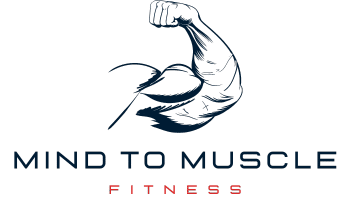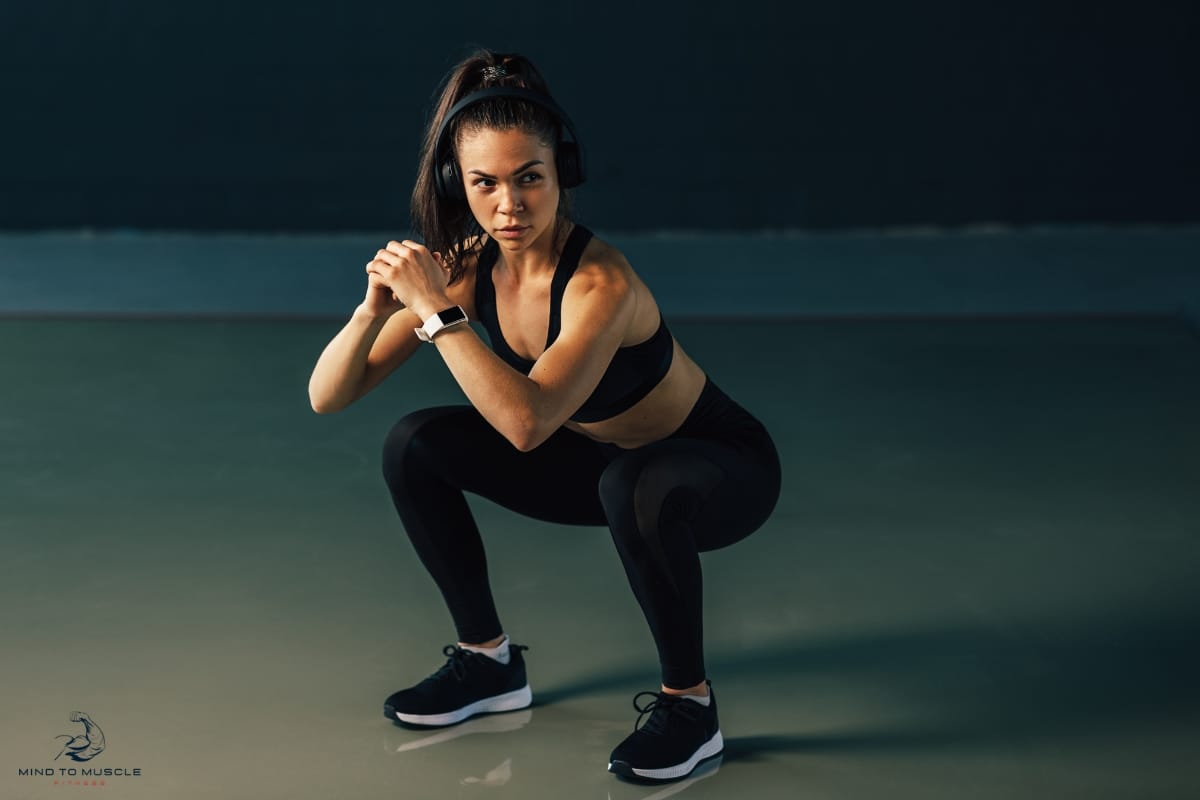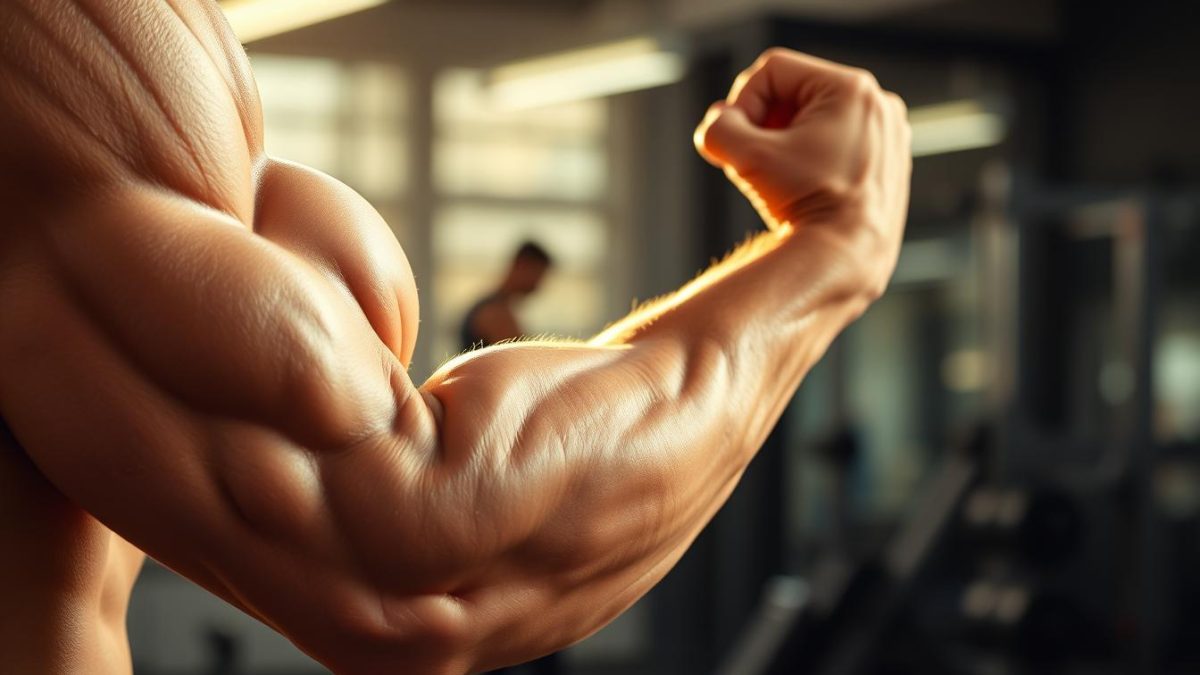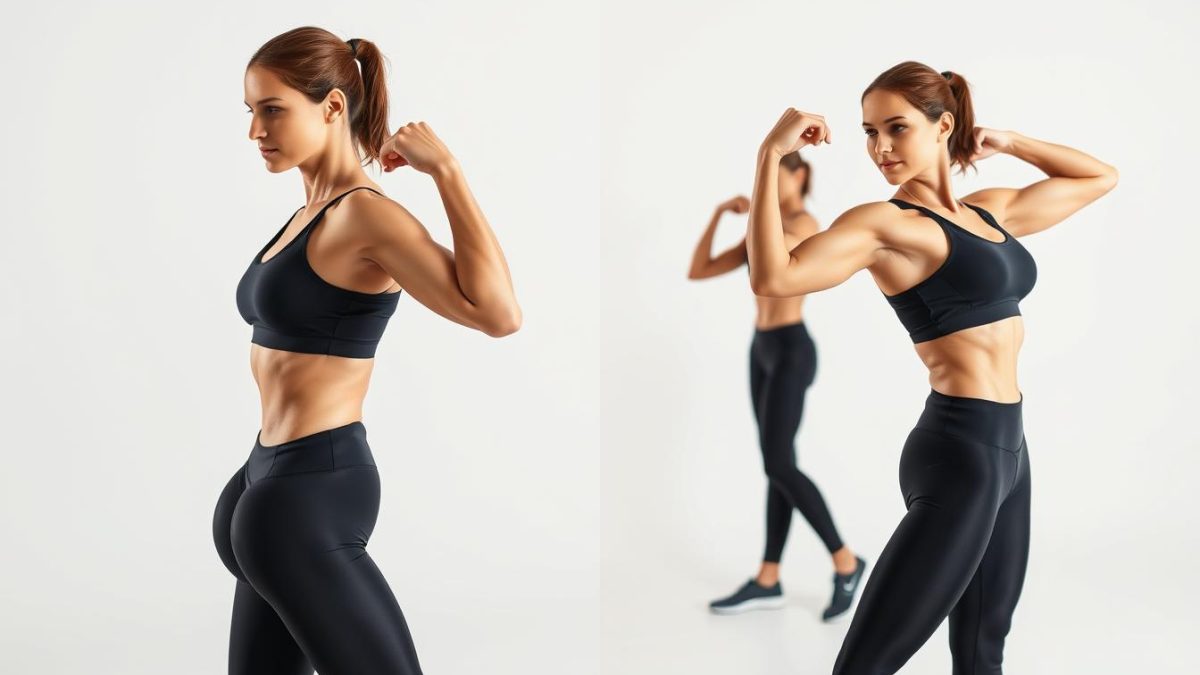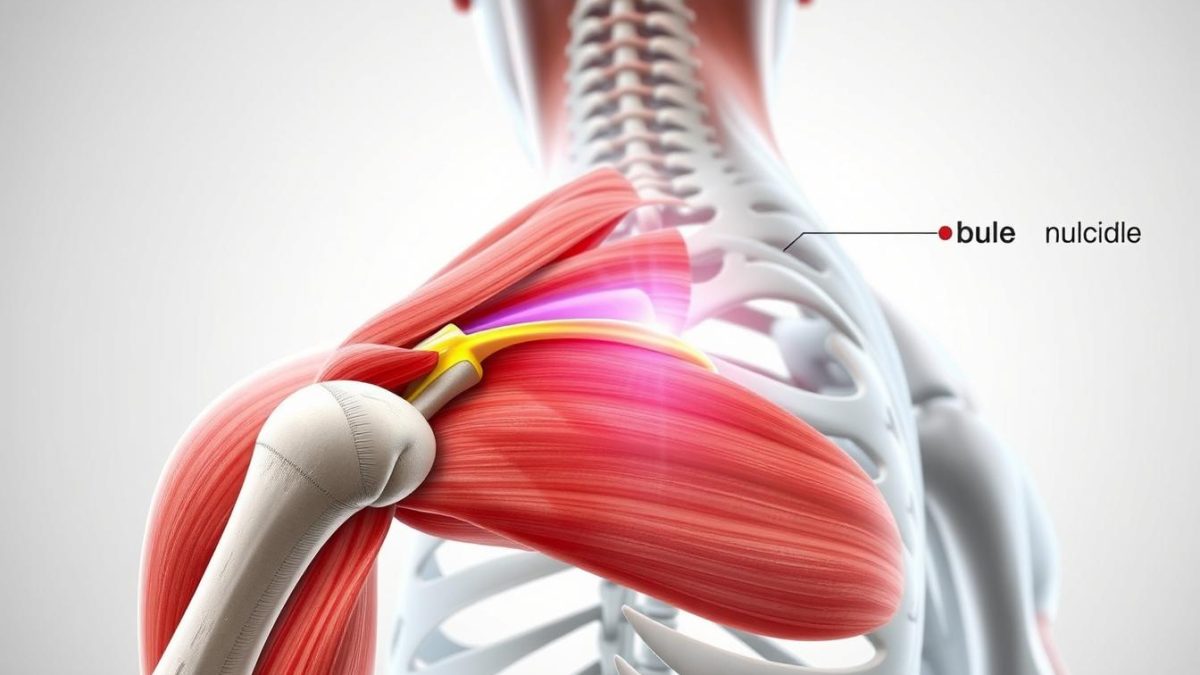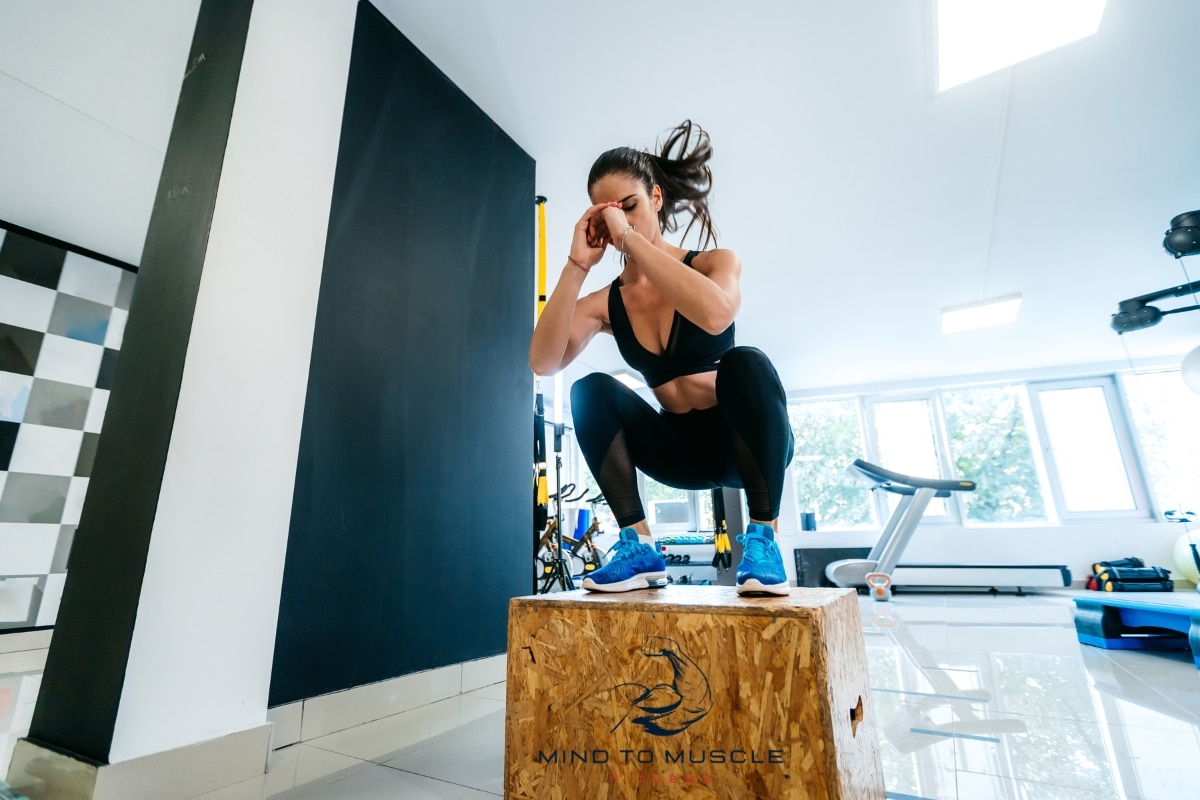
Unlock Strength with Box Squat Essentials
Seth Albersworth lifted an amazing 2,403 pounds and showed us what’s possible. His secret? Using box squats as a core part of his training. This exercise helps not only with lifting more weight but also with perfecting squat form and improving overall athletic performance.
Experts like Dave Tate believe in the box squat’s power to build a strong base and improve your form. It’s a game-changer that can push you to achieve personal bests. This method is all about using smart techniques to upgrade your lifting routine.
Let’s explore how box squats can elevate your training. They can make your back squats better, increase your lower body strength, and get you used to heavier weights. We’ll also look at how they add variety, targeting muscles from your quads to your back, benefiting your whole body.
Key Takeaways
- Box squats are essential for developing strength and improving squatting technique.
- They can significantly enhance free squat performance with appropriate stance adjustment and training frequency.
- Muscle building, strength training, and perfecting technique are achievable by tailoring sets and reps.
- Novice to advanced lifters can benefit from box squats by avoiding common mistakes and employing beneficial variations.
- Incorporating box squats into your training regimen strengthens the posterior chain and prepares your body for different levels of load.
The Fundamentals of the Box Squat
In the world of strength training, the box squat plays a crucial role. It improves lower body strength and athletic skills. It builds a strong foundation for powerlifting squats and boosts overall fitness. Learning about box squatting is vital for strength lovers.
Understanding Box Squat Mechanics
Squats are crucial for building athletic strength. The key move involves a controlled drop until touching the box, then rising slowly over five seconds. Keeping your feet right, core tight, and back straight ensures perfect form. This engages the lower body and core, improving stability and strength.
Box Squat vs. Traditional Squat: What Sets Them Apart
The box squat is special because it starts with a static position, then moves dynamically. It’s different from traditional squats’ continuous movement. This technique helps maintain tightness and power up from the bottom. It’s great for learning correct squat techniques and transitioning from bodyweight to using a barbell.
Setting Up Your Space: Equipment and Positioning
Setting up for a box squat requires precision. You need a sturdy box of the right height for below-parallel squats, as recommended by experts. Having the correct shin angle and staying tight when sitting back is key for explosive power on the way up. Integrating box squats into your routine can take your strength training to the next level.
| Muscle Groups Worked | Squatting Benefits | Squat Variations |
|---|---|---|
| Hamstrings, Glutes, Quadriceps, Adductors, Core | Increased Flexibility, Range of Motion, Joint Health | Bodyweight, High bar, Low bar |
| Shoulders, Arms, Erector Spinae | Anabolic Hormone Production, Muscle Building | Front Squat, Overhead Squat |
| Promotes Functional Movement, Rehabilitative for Knee Issues | CrossFit Air Squat, Box Squat | |
Developing Correct Squatting Technique
In strength training, your fitness form plays a big role. Getting good at the box squat is key. It requires a top-notch squatting technique. This skill helps a lot, whether you’re lifting with equipment or without. As a coach, I believe sticking to proper form is essential for squat success.
Evaluating your lifts is important. Make sure exercises like the box squat work well with your routine. Moving smoothly from box lifts to conventional squats is crucial. Both need a similar movement sequence. The right box squat comes from practicing the discipline of a free squat.
Improving at the back squat helps with key movement skills for everyone. This proves how vital a steady squatting technique is in strength training. A Back Squat Assessment (BSA) identifies and fixes 30 possible squat issues.
- Neuromuscular Coordination: Using visual aids to assist with specific squat phases.
- Strength and Stability: Tailored exercises to fortify muscle and joint endurance.
- Mobility: Flexibility drills targeting joint range of motion.
Understanding cues and focusing strategies is key in fitness form. Using the right cues greatly improves squat accuracy. Advanced methods propose focusing externally to better learn movements. This is different from focusing internally on our body’s movements.
| Deficit Category | Common Limitation | Corrective Exercise Examples |
|---|---|---|
| Neuromuscular | Poor Muscle Coordination | Assisted Squat Jumps, Stability Ball Drills |
| Strength & Stability | Inadequate Joint Stability | Romanian Deadlifts, Bulgarian Split Squats |
| Mobility | Limited Joint Range | Hip Mobility Sequences, Dynamic Lunges |
The right mix of squatting techniques and fitness form tweaks help a lot. They make your squat stronger. Whether you’re a pro or a beginner, focusing on form details improves your squat. Every squat is a chance to be better.
Integrating Box Squats Into Your Strength Training Routine
I’m a big fan of the box squat. It’s key for improving lower body exercise and powerlifting squat skills. Adding box squats to your plan can really improve your squatting technique and make you stronger. But it’s important to do them right and fit them into your training smartly.
Optimizing Your Workout Schedule
To build strength and recover well, mix box squats with other leg workouts. This balanced way isn’t just about how many squats you do. It’s also about planning your training so your muscles get enough rest. Using barbell squats on different days helps grow muscles without overdoing it.
Progression Strategies for Beginners and Advanced Athletes
If you’re new, start with a basic 3×10 box squat program to build strength. More experienced? Add small weights, like 5 lbs more each time, to your barbell squat. By upping the challenge carefully, you’ll keep getting stronger:
| Week | Resistance Increase | Box Squat Sets/Reps | Complementary Lower Body Exercises | Recovery Days |
|---|---|---|---|---|
| 1 | +5 lbs | 3×10 | Multidirectional Lunges, Leg Press | Tuesday, Thursday, Sunday |
| 2 | +10 lbs (cumulative) | 3×10 | Step-Ups, Single-Leg Squats | Monday, Wednesday, Saturday |
| 3 | +15 lbs (cumulative) | 3×10 | Burpees, Squat Thrusts | Wednesday, Friday, Sunday |
Maintaining Balance: Free Squatting vs. Box Squatting
Success in strength training means balancing free squats and box squats. Mixing these methods is key. It helps perfect your squat without losing basic skills. It’s about moving confidently from one technique to the other, focusing on your leg power.
Maximizing Athletic Performance with Box Squats
I’ve seen how box squats boost athletic performance as a muscle mentor. These strength training moves improve power, speed, and lower body strength. For athletes wanting to up their game, box squatting is key.
We’ll look at the big wins of box squatting now. Over at Westside Barbell, dynamic effort box squats have been pushing athletes to personal bests. Here’s how they compare in vital areas:
| Category | Winner | Reason |
|---|---|---|
| Strength Builder | Box Squat | Enables vertical tibiae, ideal for hamstring development. |
| Hypertrophy Builder | Squat | Offers versatile variations for muscle growth. |
| Learning Curve | Box Squat | Provides a measurable progression for mastering squat depth. |
| Mobility and Depth | Squat | More effective for deeper squats needed in Olympic lifting. |
| Wow Factor | Squat | Seen as more impressive for heavy lifts. |
| Progressive Overload | Equal | Both allow for adding more weight over time. |
| All-Terrain | Squat | Can be done in many training places easier. |
| Technique Builder | Squat | Better for overall good form. |
The right technique is crucial for the full benefit of these squats. Some make the mistake of using the wrong box height or loose bands. Setting up correctly, with the right box height and bands, leads to personal bests. Go all out for each rep, but know intensity fades after 2 or 3 reps.
To wrap it up, box squats are vital for strength training and boosting athletic performance. If you aim to top in your sport, adding box squats, especially High Velocity Potentiation Clusters, is essential. I’m here to show you mastering these moves can dramatically improve your performance.

Conclusion
The journey of strengthening begins with the box squat. It’s key for boosting lower body strength and improving your squat. As a guide in building muscle, I’ve seen box squats change beginners and top athletes alike. This method helps people grow stronger and perform better if they stick with it and do it right.
Research shows box squats work your glutes and hamstrings well. They are also safer for those looking to squat heavier. This method not only builds strength but also boosts confidence and control. With box squats, the risk of injury is lower, and they help you squat correctly, focusing on the right muscles.
I encourage adding box squats to your workouts, no matter your goals. They help powerlifters lift more and athletes move faster. By focusing on box squat benefits, we can reach new levels of fitness and athletic success.
